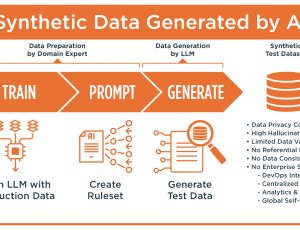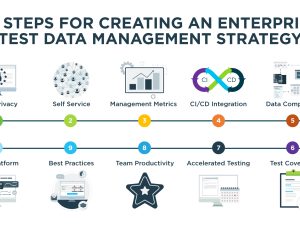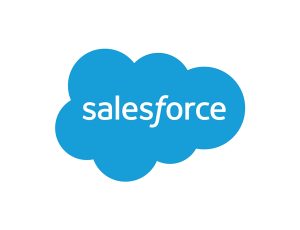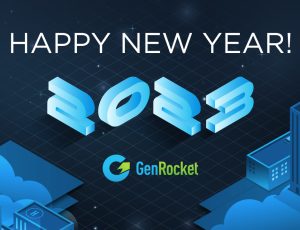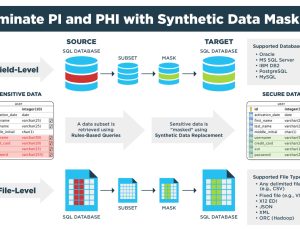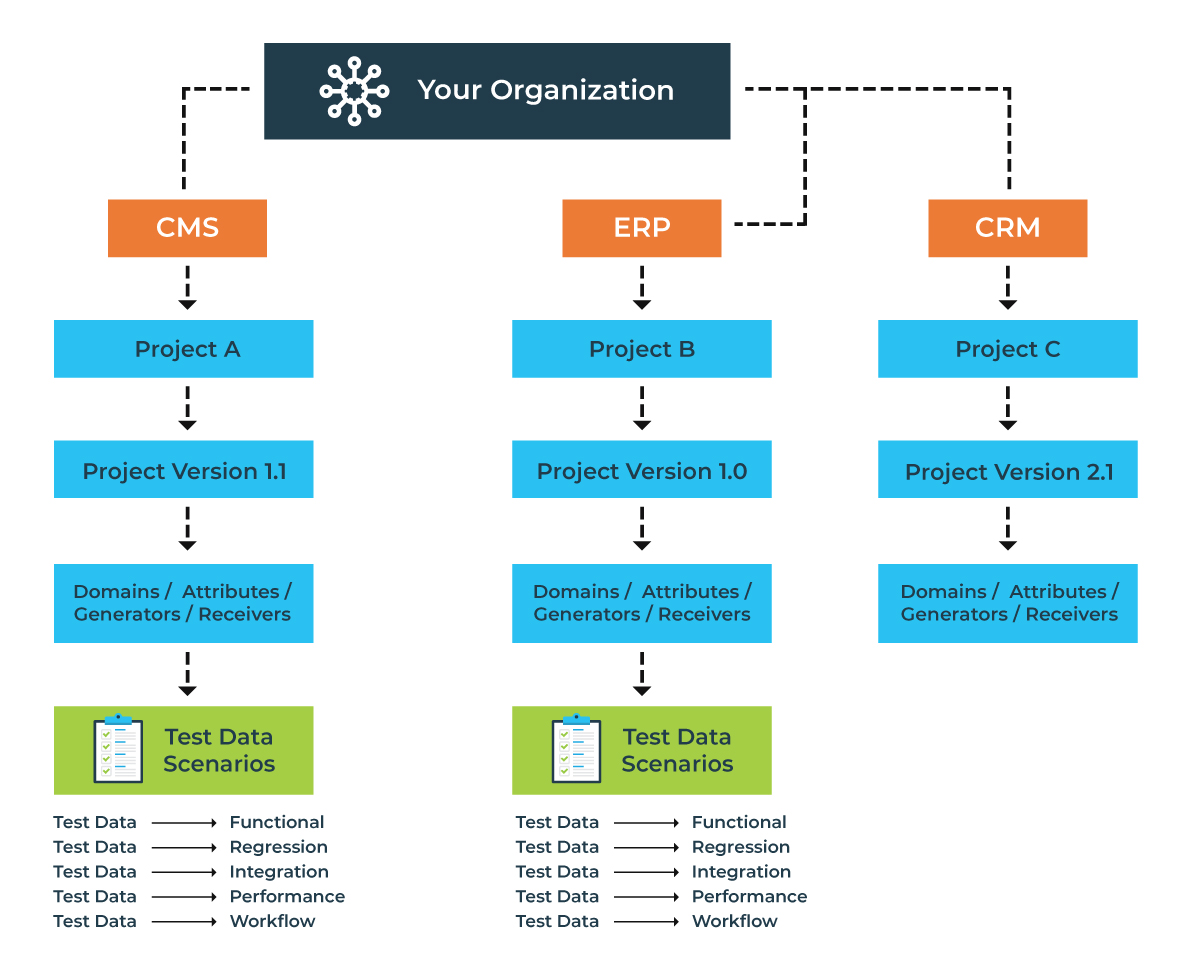
How GenRocket Enables Enterprise-Class Test Data Generation Deployment
GenRocket has introduced several new enterprise-class test data generation (TDG) features to support and accelerate the deployment of test data solutions for QA teams. An enterprise-class deployment of TDG assumes a deployment team composed of the following roles and responsibilities:
Project Manager – Oversees and manages the TDG implementation project.
Data Architect – Understands the application data model and the relationships between the different applications and their databases.
Solution Architect – Understands the test data requirements for testing the application and sets up and configures a project in GenRocket’s TDG platform to meet those needs. This role is typically a GCE (GenRocket Certified Engineer).
Data Specialist / Testers – Uses prebuilt test data generation scenarios, or builds and modifies new scenarios, to generate test data for a variety of test cases.
Using the GenRocket TDG platform, the QA team follows these basic deployment steps for each application or database under test.
- Create a test data project for each application/database
- Import the data model into the GenRocket TDG platform
- Use the GenRocket wizard to establish parent child relationships
- Review and revise auto assigned data Generators and parameters
- Assign data Receivers based on the desired output data format
- Build test data generation Scenarios to meet test case requirements
To streamline this process, enterprise-class features have been incorporated into GenRocket’s TDG platform to accelerate the traditional Test Data Management (TDM) process from as much as six to eighteen months of setup and deployment down to a matter of days or weeks.
TDG Deployment – The Big Picture
Simply put, TDG allows any type of test data, for any test, in any volume to be generated on-demand. Test data for functional testing, regression testing, performance testing, workflow testing, etc. If you can imagine the test data required, then it’s likely you can create it with GenRocket.
Of course, GenRocket can handle single use case test data requirements, but the real power of TDG is realized when it’s deployed across the organization, at enterprise scale. GenRocket’s modular design allows testers to deploy test data solutions for one application and then re-use components to quickly address the test data requirements of other applications.
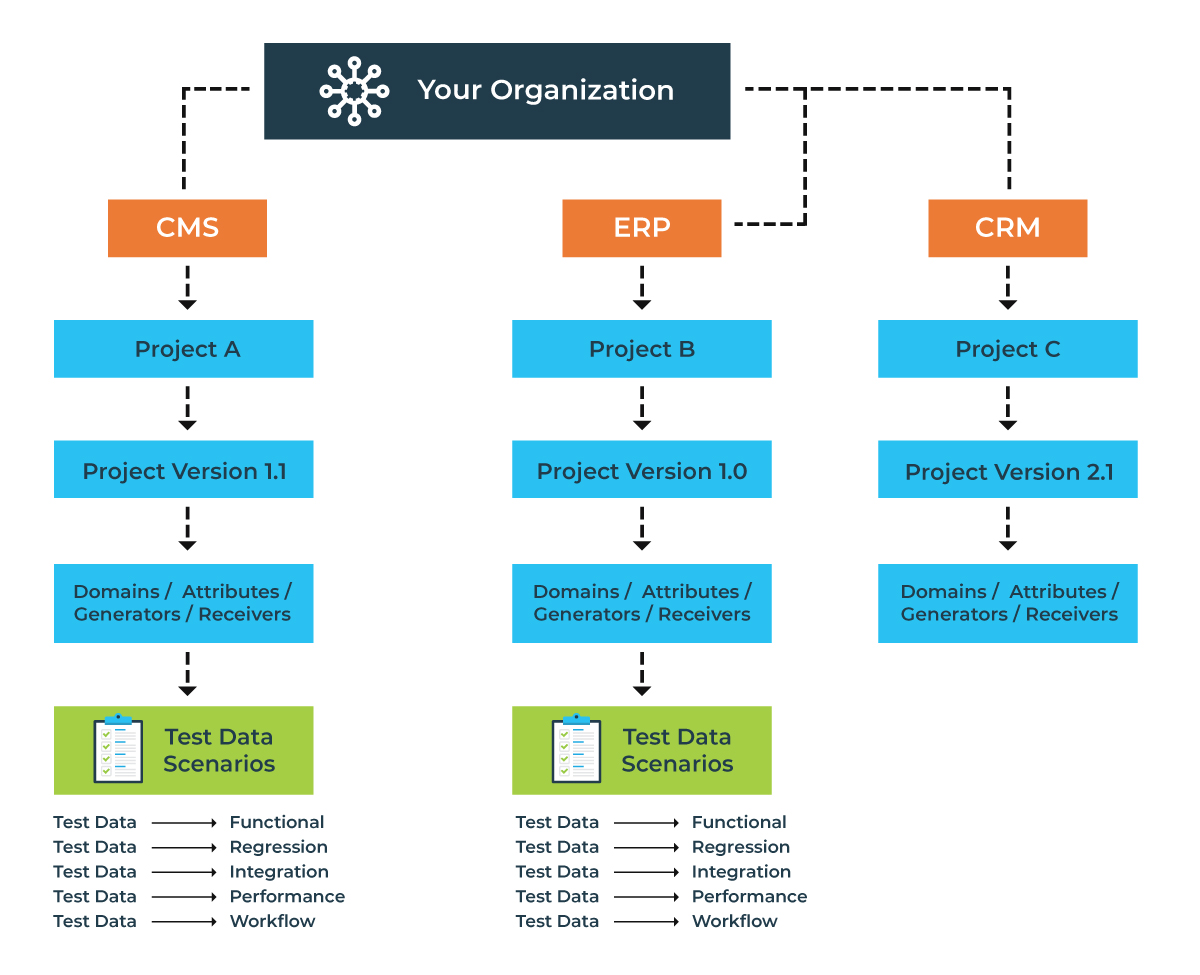
Data Model Ingestion with Enterprise XTS
Solution Architects can utilize GenRocket’s Enterprise XTS to import one, many, or all table schemas into the TDG platform by connecting directly to the database via JDBC to extract the database schema. The extracted schema is saved to an encrypted file. The encrypted file can then be imported from the GenRocket web application to automatically create test data Domains for each table, automatically associate Attributes for each column and automatically add Generators to each Attribute.
Organization Variables
An Organization Variable is a key data field, such as a User, that is used across an organization. An Organization Variable Set provides a single definition for all Organization Variables to ensure they are generated in a consistent manner for all test data sets used to test all applications. This ensures test data accuracy for the most critical data elements and prevents inaccurate or duplicate versions of key data fields that can impact the validity of test operations. The diagram below illustrates the use of Organization Variables.
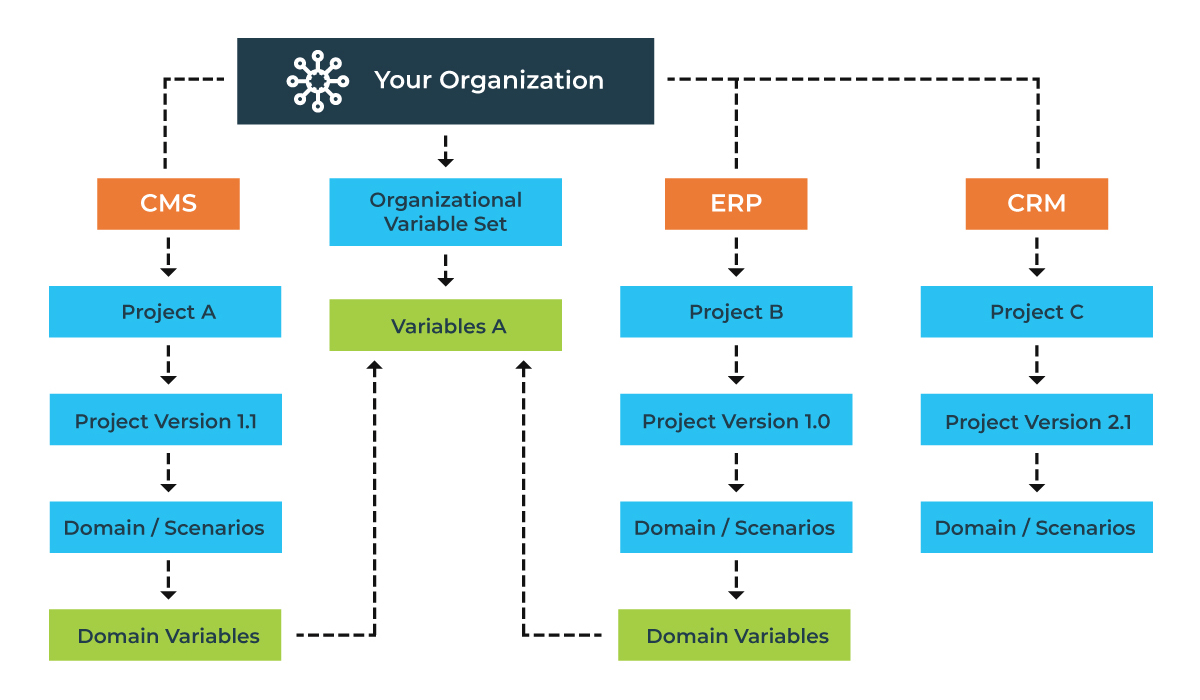
GenRocket Projects are a collection of test data Scenarios that map to a given application. Projects can be copied and version-controlled for multiple test operations by multiple testers. GenRocket’s Project Version Copy function allows testers to copy test data Scenarios at any level – the Domain level, the Scenario level, or the Project level. This allows QA teams to quickly replicate and modify existing provisioning work in order to rapidly deploy new test data.
Getting Started with Enterprise TDG Deployment
Recently, we published a related deployment document that is now titled Test Data Generation Use Cases. It provides important guidelines for the most impactful use cases of TDG. It contains a helpful checklist you can use to identify applications that will benefit most from TDG. This will also create some “quick wins” as you expand the use of TDG across the organization.
GenRocket and its many systems integration partners can help any enterprise QA department work through a structured roadmap to deploy TDG across the organization. With the help of a trained & certified GenRocket partner, four dimensions of a comprehensive TDG deployment can be fully addressed.
1. APPLICATION ENVIRONMENT
Understand the applications, the infrastructure that supports them and the underlying databases. Deliverable > Applications Audit: To identify applications and infrastructure
2. DATA ENVIRONMENT
Understand the information flow through the application environment and all data dependencies. Deliverable > Data Audit: To identify data flow and data dependencies
3. TESTING ENVIRONMENT
The current testing resources, test processes, testing tools and data provisioning processes. Deliverable > Test Audit: To understand test data tool and framework integrations.
4. TDG DEPLOYMENT
The TDG deployment plan for the organization. Deliverable > TDG Deployment Plan: A prioritized plan for application testing, test data provisioning processes, data refresh and the best strategy for integrating test data, tools and frameworks.
If you would like to learn more about GenRocket’s TDG Deployment Roadmap, Contact Us.

